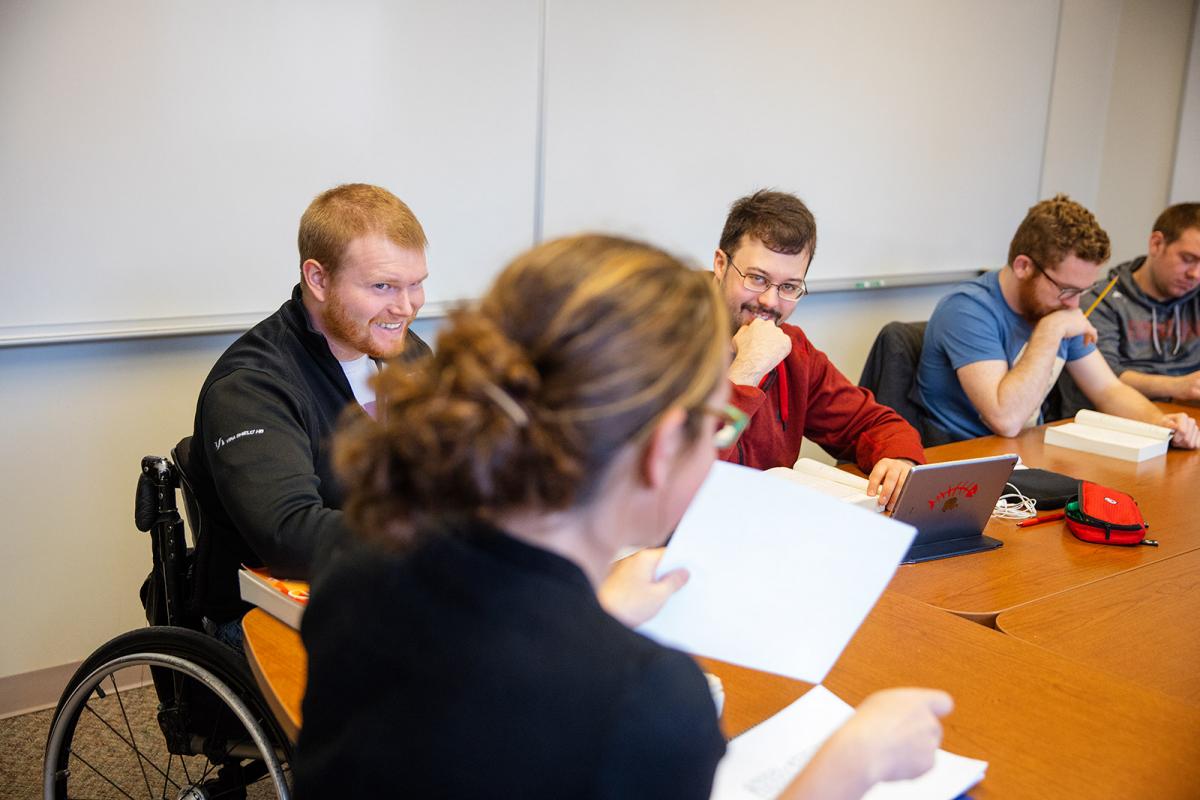Somewhere between your first and final draft, your paper might get stuck in limbo. Sure, there are words on the document pages but your writing still needs improvement. This is the point where other focused readers can provide feedback and help you edit your work to further develop your text. Whether colleagues from your department, lab, or a similar discipline, peers are an excellent resource for improving the writing task at hand and also for the long-term development of your writing skills.
Why Peer Feedback Matters
Putting the final touches on your text serves as a great incentive for participating in peer feedback, but there’s a secondary benefit: Participating in the process is also advantageous for the individual who provides feedback. While this may seem counterintuitive, time spent working on others’ texts in fact pays off. In a study of writing tutors who only gave feedback but didn’t receive it, their writing was found to improve over time.1 This research suggests that developing a critical approach to another’s text improves the reviewer’s own writing skills.
This makes sense when we consider that good writers are capable of putting themselves in their reader’s “shoes.” When writers take their reader’s perspective, they become more objective and continually ask themselves questions like, “Will the reader be confused by this”; “Is this clear to the reader?”; or, “Is the logical flow of this section transparent to the reader?” Simply put, sustained peer editing and interaction with others improves both writing skills and productivity.

For Sustained Support and Growth, Form a Writing Group
Peers are a great resource for a number of reasons: They understand what it’s like being a graduate student or a postdoc; they also understand how much work goes into completing milestones along the course of a graduate career or in submitting an article for publication. Peers can hold one another accountable while working through writing projects. They can also combat your feelings of isolation and create a positive community that provides intellectual and psychological support. A writing group may even result in later research collaborations!
Successful writing groups negotiate a shared understanding about the group’s purpose and objectives to ensure each member moves forward and finishes individual writing projects. To accomplish this, members must reach consensus on the following aspects:
- To keep the spirit of every meeting positive and productive.
- How often to meet, for how long, and where.
- Limiting membership to four or five individuals, so each participant receives feedback every 2-3 weeks.
- Whether members’ project topics are related or not, if members need to be from the same department or across departments, and whether t members have to be at the same stage of writing.
- The format for the meeting; that is, the amount of time spent on the writing process as opposed to time spent on writing feedback.
- The individuals who serve as a facilitator to keep the discussions on task, a convener to send reminders, and a time keeper to monitor agreed upon time allocations.
- The kinds of work to be read (e.g., dissertations, grant proposals, rough or polished drafts, interview protocols, posters, CVs or job cover letters).
- Both the number of pages to be submitted and the number of days needed for thoughtful feedback.
- The kind of feedback that’s reasonable to expect (e.g., organization, clarity, depth of ideas, use of figures, detailed grammar or word choice, etc.).
—Adapted with permission from Stanford University’s Hume Center for Writing and Speaking
Focusing feedback
For peer editing to be successful, feedback needs to be focused, constructive, and actionable. Peer editing is not the same as proofreading. Reviewers should avoid simply focusing on punctuation and grammar. During the peer feedback process, it’s vital to focus on ideas at the deeper levels of meaning, attending to the structural and organizational levels of the work.
The editing module (#4) in this research writing program outlines the following process, but in greater detail. Generally, focus moves from overarching considerations that affect the entire text, to narrower, more specific feedback that may only affect one passage, paragraph, or even a single sentence.

Argument and overall structure
Step 1
During initial edits, focus on the macro level. Consider the overall document to see if your colleague has a clear purpose, a narrowly defined topic, and a clear logic to the order of the sections and to the paragraphs within each section. What is most important is the writer’s persuasiveness: Are each of the sections convincing? Are the writer’s research question, methods, results, discussion, and conclusions defensible? Also, does the evidence presented speak for itself? The writer shouldn’t need to tell the reader why it supports their argument.
Step 2
Next, move to the paragraph level. Each paragraph should contain a topic sentence, and each sentence in that paragraph should support or elaborate on that topic. If a sentence introduces an additional idea or concept, this may be a tangential idea. Recommend that the writer reevaluate whether the sentence simply belongs in another paragraph or if it should be omitted entirely. Sentences that support the paragraph topic should remain, though they may need to be reorganized so the paragraph develops logically. Additionally, the length of the sentences should be varied to help keep the reader interested.
Step 3
Third, see if writers have used clear language. Suggest they simplify long phrases, use short and precise words, and use concrete examples rather than vague language. Watch for nouns that could become verbs because verbs more clearly convey the action of sentences. For example, use “consider” rather than “give consideration to.”
Step 4
Finally, check to see if the tone is authoritarian—attributing too much significance to others’ research to bolster your own position—or dismissive, particularly when discussing the weaknesses in the literature.
How to give constructive feedback
Questions to help focus your feedback and maintain a positive tone
While working from macro to micro editing suggestions, these questions from Paulus (288-289)2 help you provide feedback to others:
First, begin with the positive:
- Tell the writer what you liked best about the ideas in the text?
- Note where there are cohesive/linked ideas, where the argument is clear/easy to follow and convincing, where the writer uses effective reasoning, and which ideas are especially well-developed.
- Record where a section was particularly attention-grabbing or intriguing, where the writer had a strong conclusion, and whether topic sentences were well-supported and transitions were clear and effective.
Next, focus on areas for improvement:
- Highlight concepts that are ambiguous or simply unclear.
- Note whether or not the writer persuades the reader that the research question, methods, results, and analysis of the data are well developed and valid.
- Point to ideas that need further development.
- Highlight places where conclusions don’t flow from the support provided?
- Examine the conclusion’s effectiveness.
Methods for documenting and giving feedback
You can provide feedback either in writing or face-to-face.
Written Feedback
Using the “Track Changes” and “Insert Comments” functions in Microsoft Word, in concert with Dropbox, offers an ideal way to share written feedback about others’ writing. This is an especially effective method when groups have difficulty meeting as often as they’d like. This method, however, must be properly managed; ground rules must be established, so the process does not become counterproductive.
Individuals in a writing group might also provide written feedback in a group setting via a separate page of notes to share with the writer.
While there are two ways to provide written feedback, it’s key that you remain positive in how you share comments. Avoid unnecessarily vague comments by highlighting issues and steering the writer toward editing and improvement. For example, while “I was confused,” focuses on the reader’s response to the text, it’s still vague. More specific (and far more helpful) is a comment such as, “I was confused here because this paragraph doesn’t flow logically from the previous one.” This comment directs the writer’s attention to the problem, making it far easier to accept feedback and address the issue.
Oral Feedback
Like written feedback, oral feedback should start by identifying what the writer has done well. Next, constructive oral feedback begins on the larger issues, usually structural, or else looks to group areas for development according to themes. Focusing on smaller corrections during a face-to-face session is generally less helpful, since the writer can more easily follow your written comments. Instead, when giving feedback in person, you have an excellent opportunity to move from identifying issues to discovering possible ways to resolve a challenging passage or address organizational issues.
How to Receive Feedback
Because most of us feel vulnerable when others critique our work, receiving feedback can be challenging. It’s important to remember that critiquing your writing isn’t personal! Readability should remain the primary focus of the feedback process, and peer reviewers are your best resource for improving your writing project. To help you focus on the feedback and improve your writing, start by thanking the person providing feedback, even if it stings. Remind yourself that you are not the text.
With each item of feedback, first work to understand what the feedback is, then focus your attention on the next steps for improving the text. By keeping your focus on the text, you’re deemphasizing your role as the writer. This makes it easier to remove your feelings from the feedback process.
Citations
1 Bruffee, K. (1978). The Brooklyn Plan: Attaining intellectual growth through peer-group tutoring. Liberal Education, 64, 447-468.
2 Paulus, Trena. (1999) The Effect of Peer and Teacher Feedback on Student Writing. Journal of Second Language Writing, 8(3), 265-289.